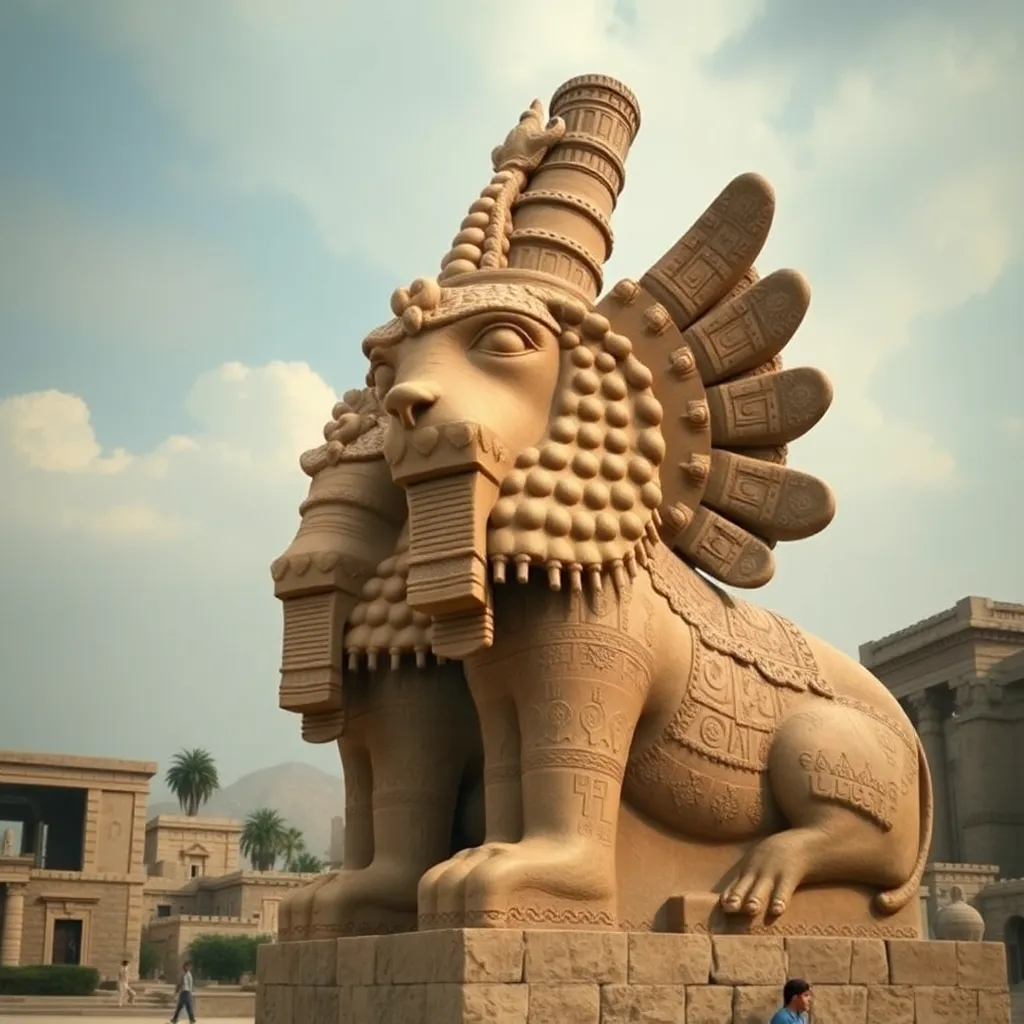From Ancient Persia to Modern Iran: The Lamassu’s Lasting Cultural Influence
I. Introduction
The Lamassu, a mythical creature with the body of a bull or lion, the wings of an eagle, and the head of a human, stands as a significant emblem of ancient Persian culture. Originally conceived in ancient Mesopotamia, the Lamassu transcended its origins to become an integral part of Achaemenid architecture, symbolizing protection and power in a time of great empires. This article aims to explore the evolution and lasting influence of the Lamassu, tracing its journey from ancient times to its place in modern Iranian culture.
II. The Historical Context of the Lamassu
A. Origin and symbolism in ancient Mesopotamia
The Lamassu first emerged in Mesopotamian mythology, serving as protective deities that guarded the entrances to palaces and temples. These creatures were believed to ward off evil spirits and bring good fortune. Their significance was not merely decorative; they were imbued with spiritual and cultural meanings that resonated with the societies that revered them.
B. The Lamassu’s role in Persian architecture and art
When the Persians rose to power, they adopted and adapted the Lamassu, incorporating it into their architectural vocabulary. In Persian culture, the Lamassu symbolized strength, protection, and divine favor, becoming a prominent feature in the grand designs of Achaemenid architecture, particularly in the ceremonial capitals like Persepolis.
III. Artistic Features of the Lamassu
A. Description of the Lamassu’s physical characteristics
The Lamassu is a striking figure characterized by:
- Body: The sturdy body of a bull or lion, symbolizing strength.
- Wings: Large, feathered wings that signify divinity and the ability to transcend earthly bounds.
- Head: A human head, representing intelligence and wisdom.
- Feet: Usually depicted with four legs, which are sometimes portrayed in a way that suggests movement, as if the creature is walking.
B. The significance of hybrid forms in ancient art
The hybrid nature of the Lamassu reflects the ancient artistic practice of blending different forms to create beings that embody multiple qualities. This fusion of animal and human elements is not just a stylistic choice; it conveys the idea of a being that bridges the mortal and divine realms, enhancing its role as a protector.
IV. The Lamassu in Achaemenid Architecture
A. Examples of Lamassu in Persepolis and other sites
The most famous examples of Lamassu can be found in the ruins of Persepolis, where they guarded the stairways and entrances of the monumental palace complex. These colossal statues were strategically placed to impress visitors and convey the might of the Persian Empire. Other notable sites include the gateways of the ancient city of Nineveh, where Lamassu figures were similarly employed in protective roles.
B. The cultural and political messages conveyed through their placement
The placement of the Lamassu in prominent positions served multiple purposes:
- Intimidation: Their imposing size and fierce appearance conveyed the power of the Persian kings.
- Protection: Positioned at entrances, they were believed to safeguard the realm from malevolent forces.
- Cultural Identity: Their incorporation into Persian architecture signified the blending of Mesopotamian and Persian cultural elements, reinforcing a sense of identity.
V. Transition Through Time: The Lamassu in Islamic Iran
A. Adaptations and reinterpretations during the Islamic period
With the advent of Islam, the representation of the Lamassu evolved. While the Islamic faith prohibits the depiction of living beings in religious contexts, Lamassu figures continued to be appreciated for their artistic merit. They were often reinterpreted in Islamic art, blending traditional motifs with new artistic forms.
B. The Lamassu’s influence on Islamic art and architecture
The Lamassu’s enduring presence can be seen in various Islamic architectural forms, where the emphasis shifted towards calligraphy and geometric patterns, yet the underlying themes of protection and power remained relevant. The fusion of styles during this period enriched the artistic heritage of Iran.
VI. The Lamassu in Modern Iranian Culture
A. Symbolism in contemporary Iranian nationalism and identity
In modern Iran, the Lamassu has been embraced as a symbol of national pride and cultural heritage. It represents a connection to the rich history of the Persian Empire and the enduring spirit of the Iranian people. The Lamassu has become a motif in various forms of national iconography, reflecting a sense of continuity and resilience.
B. The role of the Lamassu in modern art and literature
Contemporary Iranian artists and writers frequently draw upon the imagery of the Lamassu, infusing it with new meanings and interpretations. It appears in:
- Visual Arts: Paintings and sculptures that reinterpret the Lamassu for modern audiences.
- Literature: References in poetry and prose that explore themes of identity and heritage.
VII. Global Influence and Recognition
A. The Lamassu’s impact beyond Iran: influence on global art and culture
The Lamassu has transcended its cultural origins, influencing artists worldwide. Its striking form and symbolic significance have captured the imagination of many, leading to its incorporation into various art movements and styles globally.
B. Preservation and restoration efforts in the contemporary era
As a significant cultural artifact, efforts continue to preserve and restore Lamassu statues, especially those that have been damaged through time or conflict. Organizations and governments are working to protect this heritage, ensuring that future generations can appreciate its beauty and significance.
VIII. Conclusion
The Lamassu stands as a testament to the rich cultural tapestry of ancient Persia and its lasting influence on modern Iranian identity. From its origins in Mesopotamian mythology to its prominent role in Achaemenid architecture and its adaptations in Islamic art, the Lamassu embodies the enduring legacy of a civilization that shaped not only its region but also the world beyond. As we reflect on the importance of cultural heritage, the Lamassu reminds us of the shared narratives that connect us to our past and shape our national identities.



